
Sense's Reminiscences
by Sense de Jong
the MS St Louis
- Geurt
- Tante Betje (by Sense)
- Tante Betje (by Truus)
- Miss Roozendaal
- Concert in Winschoten
- A baptism remembered
- My birdhouse
- War veterans
- Henk Smit - bass/baritone
- Stefan
- In memory of Herman - I
- In memory of Herman -II
- Remembering AK
- Our love for music
- Herman - Promoter of Christian Causes
- A Salem evening with Herman de Jong
- From Elsinore to Monschau
- A Danish Treat
- Glimpses of Thuringia and Saxony
- Domie and Hansie
- La Manche, Newfoundland
- Bermuda - Isle in the Sun
- 1932 and 1934
- 1940 - 1945
- Winschoten, Grace on the Venne
- 1948
- Johann Sebastian Bach
- From Generation to Generation
- Seven children and a harmonium
- K.P. - A Man of Enterprise
- Cuba and the tragedy of the MS St Louis
- It all began in Norwich, Ontario
Another site by Sense de Jong:
~ Hinne de Jong ~
A Chronicle
Sites by Henry de Jong:
~ Herman de Jong ~
Memorial
~ Newmaker Notes~
Writings, Pictures, Collections
~ AACS/ICS Niagara Conferences~
1970 - 1991
During the summer of 2009, my wife (Corrie) and I had the privilege to visit the island of Cuba. We landed near the capital city of Havana, which, on the map, is not all that far away from Key West, one of the islands lying off the coast of Florida.
We were driven from the airport to the north-west and soon arrived at one of the hundreds of resort hotels dotting the Cuban coast. Our hotel was located at the beginning of a slip of land, really a peninsula, at a place called Varadero, surrounded by the waters of the Atlantic Ocean. This peninsula is literally full of super-expensive, and also less luxurious hotels, ours being the lesser kind. The Varadero strip is known for its beautiful beaches.
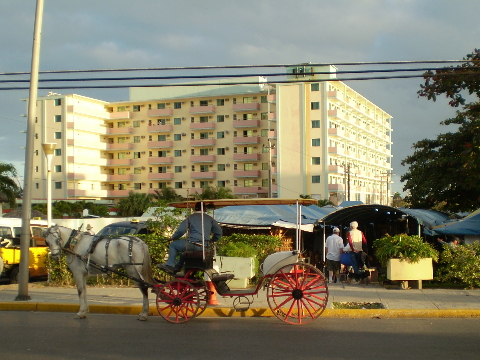
While staying in this tropical area we had no car, so we walked a lot and I mean a lot. Like everyone else we hung out on the beach, sat under palm trees, walked or waded along or in the ocean, or we went sightseeing. Joining an excursion group, we went by bus to the sizeable, colonial town of Matanza where we visited a historic apothecary as well as the famous Matanza caves featuring statactiles and stalagmites, plus a museum. Matanza, like Havana, has a distinctly European atmosphere and we felt like Europeans again, which we are by birth.
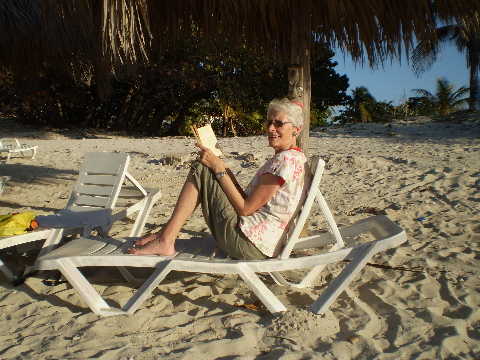
We knew that another couple from our home church (Jubilee Fellowship Christian Reformed Church, St. Catharines, Ont. Canada) would also be visiting Cuba, also on the Varadero strip. We knew the name of the resort, so, one day, we decided to walk there. Well, we walked something like ten kilometres and we were still not there. Coming close to a resort, lying way off the beaten track, we suddenly saw her and her kids (her husband was trekking along the beach). Hey, guys, how are you! We always have lots to talk about with this young mother, she being a lover of classical music (as we are) and being a player in the First Violin section of the St. Catharines Symphony Orchestra.
It was wonderful to talk, but all good things come to an end. Outside the resort grounds I saw a Cuban man standing by his horse and buggy. I asked him if he could bring the two of us back to Varadero town. ‘t Would be a pleasure, he said, and soon we were on our way, thoroughly enjoying ourselves. Arriving in Varadero, I gave him ten US dollars, and he nearly fainted. Cubans have their own money, but they never say No to American bucks. To them $10 US is a small fortune.
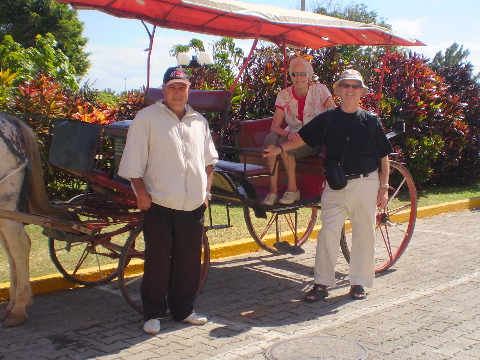
On a Sunday morning we walked in a leisurely manner to a Presbyterian Church located on the edge of Varadero. We expected to hear a bit of English, but all we heard was Spanish, the Cuban kind. Never mind, the people made us feel most welcome and we warmly joined them in songs, praising our Creator and heavenly Father.
Being in Varadero we found one thing greatly amusing. It is a well-known fact that in Cuba you don’t see any of the modern cars we are used to. Never once we saw a modern vehicle, only old Fords or Chevies or Dodges, etc. Soon after our arrival we saw some very old, dated buses, in remarkably good shape. We learned that the Cuban government bought some second-hand buses, all originating in various places in the Netherlands. Well, we nearly jumped when we saw these still functioning vehicles. The new owners had simply left the old destination signs on the front of the buses! Any Dutch person seeing buses in Cuba with signs like ZOETERMEER, AMERSFOORT, ZWOLLE, ARNHEM, all major Dutch centres, would start laughing (or crying?). Absolutely delightful!
Havana
A group of tourists, including us, booked an all-day trip from Varadero to Havana, Cuba’s capital city. The day was focussed especially on the old part of the city, "Habana Vieja."
Upon arrival we were struck by how the building looked so similar to the architecture of southern European cities. The old town was literally crawling with old American cars. There were many performers on the streets, some amazing stilt walkers, street performers and musicians, all adorned in colourful costumes.
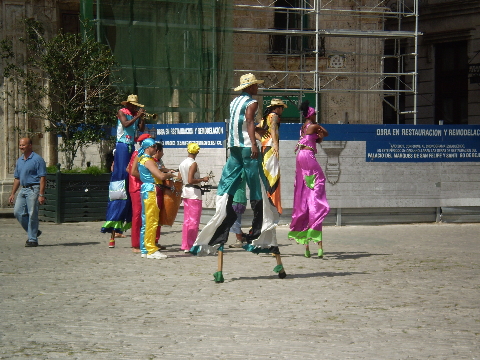
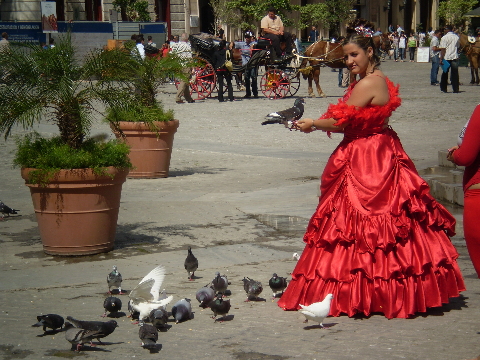
We arrived at the plaza in front of El Capitolia Nacional, the Capitol, which was built exactly in the style of the famous Capitol Building in Washington, DC. We climbed the stairs to the entrance and were told the building is basically unused for (communist) government purposes. We did not have enough time to do justice to visiting the interior of the many beautiful churches, such as the Old Havana Cathedral, the San Christobar. We also wandered onto a plaza which could be called the very heart of Cuba’s revolutionary government, the Plaza de la Revolucion. While walking through it, we visualized large groups of citizens around us, shouting the slogans of the revolution. It features a very large edifice of Che Guevara, who, together with Fidel Castro, led the forces responsible for the overthrow of the notorious Fulgencio Batista in 1959.
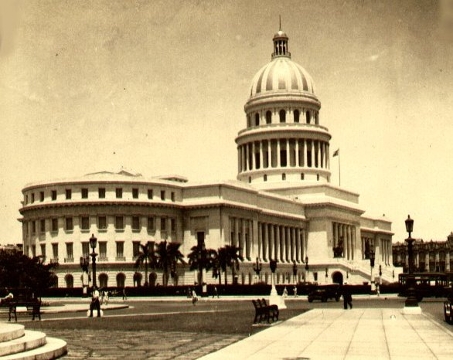
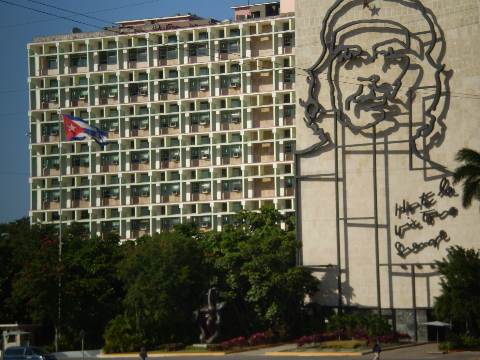
We enjoyed wandering the small streets of Havana, where we listened to groups of mostly aging musicians playing folksy, as well as classical, music. This is where we heard the real heartbeat of the Cuban population, many of whom were former slaves.We had a delectable meal in a very old and spacious restaurant.
Afterwards, we strolled to the famous Havana harbour, which features on the east side the very large Morro Castle, guarding the entrance to the city from the mighty Atlantic
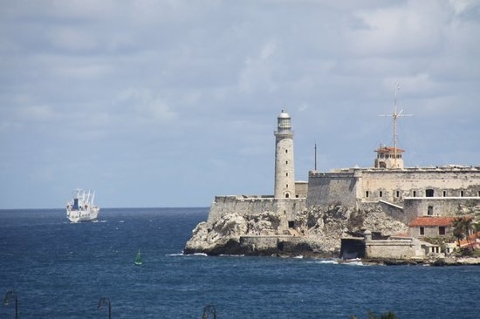
But now, dear readers, we have arrived at a place which compels me to bring us back to 1939 when a huge German transatlantic ship, just before the start of World War II, made a tragic journey from Hamburg to bring its passengers to this vary spot, the Havana harbour. Please read on….
"Voyage of the Damned"
This is how film producers later referred to this long, tragic trip from Germany. On Saturday, May 13, 1939, the transatlantic MS St. Louis of the Hamburg-America line (HAPAC) set sail from the port of Hamburg, Germany, bound for Havana, Cuba. The ship was carrying 900 passengers, the vast majority of them German-Jewish refugees, and 231 crew. Two days later, another 37 people boarded in Cherbourg, France.

During the voyage across the Atlantic, Captain Schroeder heard that Cuban authorities had decided to prevent debarkation in the Cuban harbour. This despite the plan to use the Havana port as a transit station for the refugees on the way to the U.SA and Canada.
Meanwhile, the passengers, who were kept in the dark about Cuba’s attitude, wined and dined in luxury on board the MS St Louis. Approaching the island they were shocked to hear they might be in for a great disappointment.
So, upon arrival, Captain Schroeder was being denied to dock in the Havana harbour and his ship was even towed back into the Atlantic where it rode its anchor. Negotiations continued and this resulted that 28 non-Jews were disembarked, being brought to shore in little boats that came along
Eventually, negotiations failed and Captain Schroeder decided to visit the port of Miami, Florida, to start negotians with the USA, and Canada.
In the U.S., Cordell Hull, Secretary of State, advised President Roosevelt not to accept the Jews. And thus they were denied admission.Then a group of academics and clergy in Canada tried to persuade Canada’s then Prime Minister, William Lyon MacKenzie, to provide sanctuary to the passengers. Also to no avail.
After much waiting, Captain Schroeder returned the ship to Europe. He refused to bring the ship back to Hamburg, but successfully moored it in the Port of Antwerp, Belgium, arriving there on June 17, 1939, with 907 passengers. There he tirelessly began negotiations with the U.K., Belgium, the Netherlands and France.
Prime Minister Neville Chamberlain agreed to take 288 passengers. Subsequently,they were taken by other ships to the U.K. The remaining 619 passengers were accepted by France (224), Belgium (214) and the Netherlands (181). Historians have estimated that nearly 25% of the 619, nearly a quarter, perished in death camps such as Auschwitz and Sobibor.
After the war, during the denazification process, Captain Schroeder was put on trial, but thanks to testimonies and letters in his favour from the St. Louis survivors, the charges were dropped. In 1957, the federal government of Germany awarded him the Order of Merit for his services in the rescue of the refugees He died in 1959 at the age of seventy three. On March 11, 1959, Yad Vashem, the official institution dedicated to the conservation of the memory of the victims of the Holocaust, recognized him posthumously as Righteous Among the Nations.
In 2012, the US Department of State formally apologized in a ceremony attended by Deputy Secretary Bill Burns and 14 survivors of the incident.
In May, 2018, Prime Minister Justin Trudeau announced the Government of Canada would offer a formal apology in the House of Commons for its role in the fate of the ship’s passengers. The apology was issued on November 7, 2018.
Note: During WWII, MS St. Louis was used as an accommodation ship for the Kriegsmarine, the Navy of Nazi Germany. She was heavily damaged by the Allied bombings at Kiel on August 30, 1944. The ship was repaired and used as a hotel ship in Hamburg in 1946. She was later sold and scrapped in 1952.
(P.S. Above details were gleaned from Wikipedia and from the prologue to the book The German Girl (2016), a novel by Armando Lucas Correa, a book I only recently became aware of – sdj)
SDJ
March 2019
[an error occurred while processing this directive]